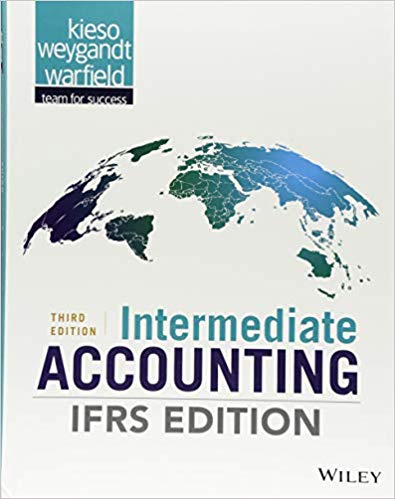Kobayashi Ltd. reports in the current liability section of its statement of financial position at December 31,
Question:
Instructions
a. Is management's intent enough to support long-term classification of the obligation in this situation?
b. Assume that Kobayashi Ltd. issues ¥13,000,000 of 10-year debentures to the public in January 2019 and that management intends to use the proceeds to liquidate the ¥10,000,000 debt maturing in March 2019. Furthermore, assume that the debt maturing in March 2019 is paid from these proceeds prior to the authorization to issue the financial statements. Will this have any impact on the statement of financial position classification at December 31, 2018? Explain your answer.
c. Assume that Kobayashi Ltd. issues ordinary shares to the public in January and that management intends to entirely liquidate the ¥10,000,000 debt maturing in March 2019 with the proceeds of this equity securities issue. In light of these events, should the ¥10,000,000 debt maturing in March 2019 be included in current liabilities at December 31, 2018?
d. Assume that Kobayashi Ltd., on February 15, 2019, entered into a financing agreement with a commercial bank that permits Kobayashi to borrow at any time through 2020 up to ¥15,000,000 at the bank's prime rate of interest. Borrowings under the financing agreement mature 3 years after the date of the loan. The agreement is not cancelable except for violation of a provision with which compliance is objectively determinable. No violation of any provision exists at the date of issuance of the financial statements. Assume further that the current portion of long-term debt does not mature until August 2019. In addition, management may refinance the ¥10,000,000 obligation under the terms of the financial agreement with the bank, which is expected to be financially capable of honoring the agreement. Given these facts, should the ¥10,000,000 be classified as current on the statement of financial position at December 31, 2018?
Debentures
Debenture DefinitionDebentures are corporate loan instruments secured against the promise by the issuer to pay interest and principal. The holder of the debenture is promised to be paid a periodic interest and principal at the term. Companies who... Financial Statements
Financial statements are the standardized formats to present the financial information related to a business or an organization for its users. Financial statements contain the historical information as well as current period’s financial...
Fantastic news! We've Found the answer you've been seeking!
Step by Step Answer:
Related Book For 

Intermediate Accounting IFRS
ISBN: 978-1119372936
3rd edition
Authors: Donald E. Kieso, Jerry J. Weygandt, Terry D. Warfield
Question Posted:





